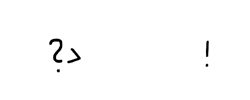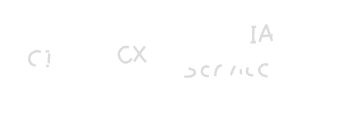Designers share a problem with politicians and business consultants: nobody knows what they are actually doing. I can shed some light on what designers do.
They shape our daily environment. How?
They make things. Things like products, communication or systems that meet our needs and offer meaning.
Designers make these things understandable, useful, and beautiful.
They introduce new ideas into our daily lives.
And these ideas are constantly changing. We witness scientific progress, the evolution of new technologies, the disruption of markets, the emergence of unforeseen challenges, and with it fashions of taste: what we consider ugly today is beautiful tomorrow.
Good designers keep up with this change, excellent designers push forward.
Design is progressive–always.
But what are the guiding threads that keep designers afloat in this ocean of change? Three things: Craft, Reflection, and Value.
1. Craft – What do you make?
The way we make things has evolved. We started out with our bare hands. Then we created tools and became craftsmen. With industrial mass production we needed to draw new forms of products that could be produced in factories and supplied to a consumer market. And recently the digital revolution gave rise to the design of complex systems like websites or mobile phones.

This evolution from using our bare hands to the design of complex systems does not mean that new methods have replaced old ones. Instead, each development added a new layer to how we make things. Design today is still firmly rooted in craft, although our understanding of it has changed.
Today we might define craft in a wider sense as an activity, which we do for its own sake in pursuit of mastery. As designers we start with what we love to make.

This craft is our main source of inspiration and our connection with the world because we make things. Or to be more precise: we make things that work.
And sometimes they don’t.
It is these moments of frustration that force us to learn, to correct our ideas about the world. The frustration we meet as craftsmen is essential to an active relationship with the world. It keeps us in touch with reality.
2. Reflection – How do you make it?
Making comes first, but still—designers must think.
When we improve our environment, we might at first focus on an object that solves a problem. Let’s say, we want to find a better way to conserve food and come up with a new food container. The object—this new container—is the solution to the problem.
But what if we don’t stop at this object but instead look at how we came to this solution? Then we can abstract this process and apply it to other problems as well.

Designers are not just obsessed with results but also with how they get there. Thus, we clarify and improve the creative process. This includes common design thinking tools and creativity techniques, but most importantly: understanding ourselves and developing our personal creative habits.

The creative process is an interplay between our chaotic impulses to go beyond the ordinary, and the orderly discipline necessary to convert unconventional ideas into tangible results.

As mentioned above, design is in sync with the current Zeitgeist. In a professional context which keeps changing with such rapid force, designers must be able to adjust their course of action on a regular basis. “What the hell are we doing here?” is not only the central question to keep single projects on track, it is also a corrective to make sure our activities are aligned with what is going on in the world.
This is easier said than done, and curiosity is not enough. To digest and make sense of the coming and going of ideas and technologies requires analytic thinking and the ability to connect the dots, to tell stories.
3. Value – For whom do you make it?
How we do things in our everyday lives and what we use to do them shapes who we are. Think for instance of what we eat and how we prepare our food. Both the function and the form of the objects that we use are part of the community we live in.

As designers we move within the realm of this collective taste. And yet we also go beyond it, we expand it. We have to be original. We must have new ideas!
To do so we must develop our skills and find our own voice. We have to disconnect ourselves from convention to follow our personal obsessions and idiosyncrasies.
We have to leave what is normal.

Yet this preoccupation with our personal interests and the joy found in artistic obsession can become a slippery slope.

We might forget that what we create must be integrated into the daily lives of others. Making original products is not enough, other people must like them.
We have to come home.

A designer’s job is to make other people happy.

Design that offers no value for others—is without value. On the other hand, designers who offer people value will receive value in return.
Of course the hard part is to find out what people want. Designers are obsessed with this question.
Designers invent their own job
Our technology and our thoughts about the world evolve. As a consequence new ways of shaping our environment give rise to new flavours of design.

It is easy to get confused by all these disciplines and their jargon. But they all share some basic principles: They shape our daily environment using contemporary tools and ideas to make our environment functional and meaningful. Their process is rooted in craft, expanded through reflection and offers value to others.
Before you go
Let me know how you think about Design in the comments! Also… subscribe to my mailing list to receive more animated stories!



6 comments On So… this is a job?
Well written I thought there would be more concrete examples of what designers are and what they do but this approach was abstract and broad enough to encompass all kinds of design. Bravo for that!
A key takeaway for me is the principle of adding value to people. This is a big part of how designers differ from artists; artists will create whether their creations add value or not but a designer’s creations must add value or they will cease to be a designer.
I’ll definitely be sharing this with my non-designer friends and family who are more curious about what I do.
For context, I’m a UX designer working in the financial industry.
I appreciate your thoughts on what designers do. I would add that design shapes how we think too — from propaganda to enlightenment. And it shapes what we think about — current news to worldview perspectives. Sounds like writing, but writing needs to be designed to be understood by others (from font choice to layout to emphasis).
What do you think is a difference (if you think there is any) between that Design you write about (let’s call it “Design” with capital “D” after Glenn Parsons) and design that other people do e.g., engineering design or design that product managers and business people do? It seems that all these kinds of design are concerned with usefulness, but Design takes understandability and beauty with special care.
Pingback: Weekly Design Links – 04/26/22 – Words & Letters ()
Pingback: Pixels of the Week – May 1, 2022 by Stéphanie Walter - UX Researcher & Designer. ()
Your writing has puts words to what I do. If someone asks me what I do, I tell them I am an art book designer. They ask if I have written the text? I say no. Did I create the images, I say no. Then they say, well what do you do? If they haven’t already walked away, I say I create the place for the words and images to live, in a concise, orderly, and aesthetically pleasing form, which is the book you hold in your hand. If the author just gave you a file of text and and a folder of images, would you understand or enjoy the content?